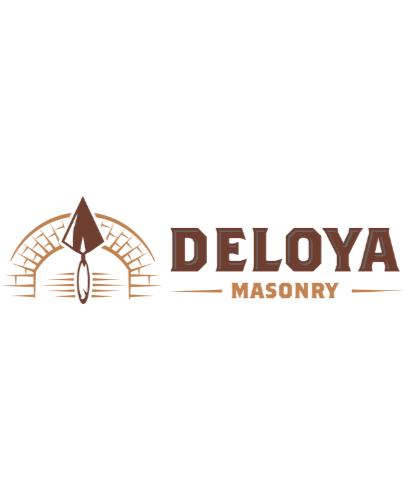The Ultimate Guide to Retaining Wall Materials: Durability, Aesthetics, Cost, and Sustainability
- Wilzave Quiles Guzmán
- Oct 6
- 3 min read
When it comes to enhancing the beauty and functionality of your outdoor space, retaining walls are more than just structural features—they're essential landscape elements that manage soil erosion, control water runoff, and add visual interest. Choosing the right material is critical, as it affects everything from longevity and strength to appearance and cost.
In this comprehensive guide, we’ll explore the most common retaining wall materials—natural stone, concrete, timber, and brick—to help you make an informed decision that suits your needs, design goals, and budget.

Why Material Selection Matters
Choosing the right retaining wall material isn't just an aesthetic decision—it's a structural one. Your choice will directly impact:
Durability and lifespan
Resistance to weather and soil conditions
Installation requirements
Maintenance needs
Overall landscape design cohesion
Understanding the strengths and weaknesses of each material ensures your retaining wall remains functional, visually appealing, and resilient over time.
Top Retaining Wall Materials (With Pros & Cons)
1. Natural Stone
Best for: Timeless elegance, luxury landscapes
Pros:
Extremely durable (especially granite, limestone, sandstone)
Naturally beautiful and blends well with surroundings
Minimal maintenance required
Cons:
High material and labor costs
Labor-intensive installation
Irregular shapes can complicate design
2. Concrete
Best for: Modern aesthetics, custom designs
Pros:
Strong and long-lasting
Highly customizable (can mimic stone or brick)
Cost-effective compared to natural stone
Cons:
Can crack if not properly installed
Environmental concerns due to cement production
Aesthetics may feel industrial without proper finishing
3. Timber
Best for: Rustic charm, budget-friendly DIY projects
Pros:
Affordable and easy to install
Warm, natural appearance
Great for small-scale or temporary solutions
Cons:
Shorter lifespan (subject to rot, pests)
High maintenance (sealing, staining)
Not ideal for high-load areas
4. Brick
Best for: Traditional landscapes, classic designs
Pros:
Uniform look with a classic aesthetic
Good durability when properly installed
Can be reused or recycled
Cons:
Less flexible in design than stone or concrete
Higher cost than concrete
May need mortar repairs over time
Comparing Durability by Material
Natural Stone: Highest durability; resists erosion, weather, and time.
Concrete: Highly durable, especially when reinforced; customizable strength.
Timber: Lowest durability; requires constant upkeep and can degrade in moist environments.
Brick: Fairly durable but vulnerable to cracking and mortar decay in extreme climates.
Visual Appeal & Design Aesthetics
Each material brings a distinct style to your landscape:
Natural Stone: Organic, luxurious, blends into natural surroundings.
Concrete: Clean, modern, highly adaptable to textures and shapes.
Timber: Rustic, cozy, best for gardens and informal settings.
Brick: Formal, classic, suitable for traditional homes and gardens.
Consider matching your wall material to existing elements like patios, walkways, or your home's exterior.
Cost Breakdown: What's Most Affordable?
Material | Average Cost (Per Square Foot Installed) | Long-Term Value |
Natural Stone | $25–$70+ | Excellent |
Concrete | $15–$45 | High |
Timber | $10–$25 | Moderate |
Brick | $20–$50 | Moderate to High |
While timber is initially cheapest, its shorter lifespan and higher maintenance can raise long-term costs. Natural stone is pricey up front but offers unmatched longevity.
Eco-Friendliness of Retaining Wall Materials
Natural Stone: Environmentally friendly; minimal processing and long lifespan.
Concrete: High carbon footprint, but recyclable and long-lasting.
Timber: Sustainable if responsibly sourced; pressure-treated wood may pose environmental risks.
Brick: Often made from natural clay and can be repurposed; moderate eco-impact.
For a greener approach, consider reclaimed materials or products with recycled content.
Maintenance Overview by Material
Material | Maintenance Required | Tips for Longevity |
Natural Stone | Low | Check for movement, occasional cleaning |
Concrete | Moderate | Inspect for cracks, seal every few years |
Timber | High | Seal/stain annually, inspect for rot |
Brick | Moderate | Repoint mortar, clean surface occasionally |
Installation Tips for DIY or Contractors
Drainage is crucial: All walls need a way to relieve hydrostatic pressure behind them.
Start with a solid base: A compacted gravel base ensures long-term stability.
Consider reinforcement: Use geogrid or rebar for higher walls.
Follow local codes: Permits may be required, especially for walls over 3–4 feet.
Even if you're going DIY, consult a landscape professional for best practices.
Final Thoughts: Choosing the Best Material for Your Retaining Wall
There’s no one-size-fits-all answer when selecting a retaining wall material. Your final decision should be based on:
Functionality – Does it support the soil and drainage properly?
Aesthetics – Does it match your landscape and personal style?
Budget – Can you afford the upfront and long-term costs?
Maintenance – Are you prepared for the upkeep it requires?
Whether you're looking for a natural stone masterpiece, a sleek concrete solution, or a budget-friendly timber installation, choosing the right material can transform your outdoor space into a functional and stunning retreat.
Need Help with Your Retaining Wall Project?
Want professional insight on which material is best for your landscape? Contact us for a personalized consultation or quote!




Comments